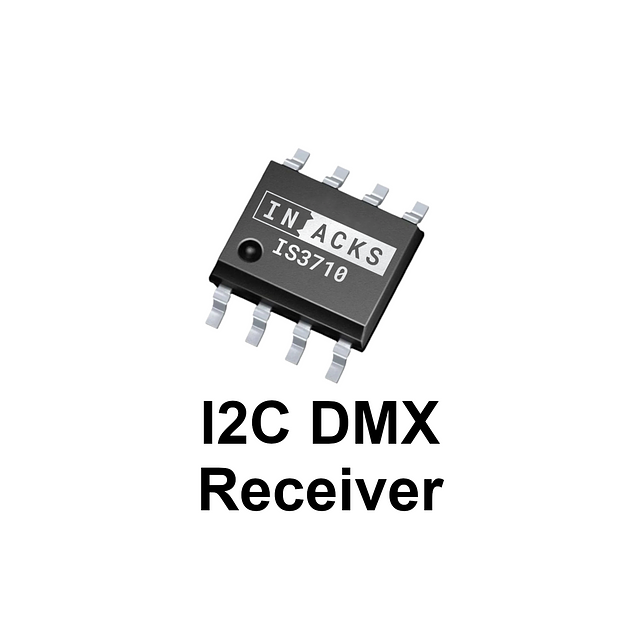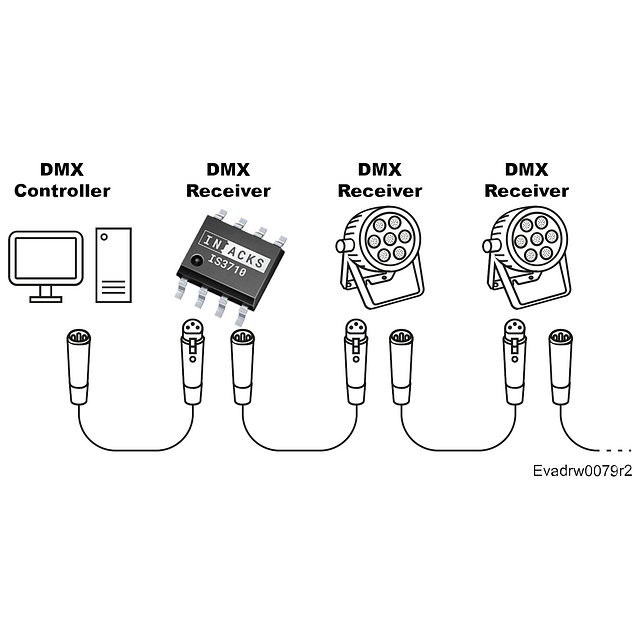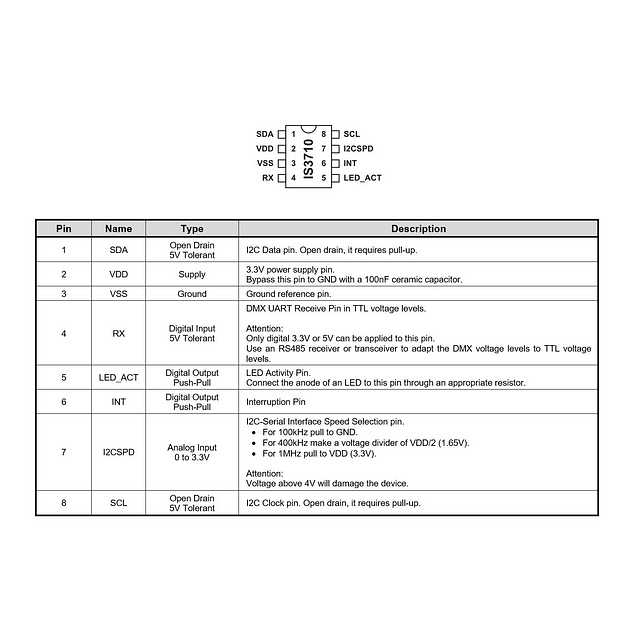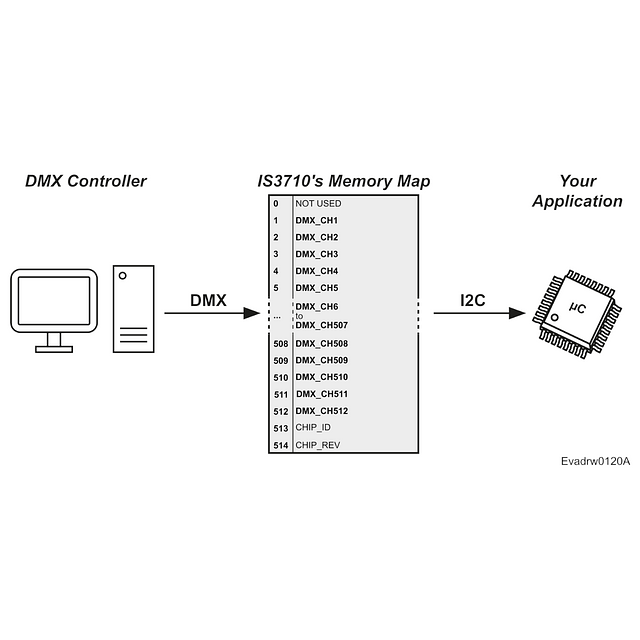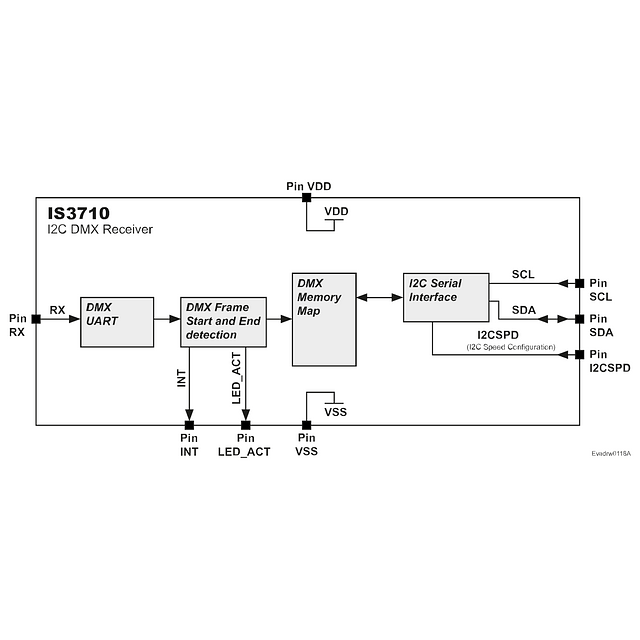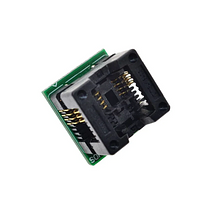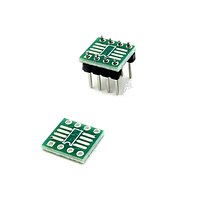Description
The IS3710 is a chip that performs one job, does it extremely well, and is super easy to use (you don’t need any libraries — we love the KISS principle). It receives DMX frames and stores each DMX channel into its memory.
For more information download the Datasheet.
How it Works?
The chip has two ports:
- An I2C interface *that connects to your microcontroller, FPGA, Arduino, Raspberry Pi, etc. This is where you *retrieve the DMX data.
- A UART input that connects to your favorite RS485 transceiver. This is where the *DMX data arrives *from the RS485 transceiver.
The chip’s internal memory consists of 512 registers, mapped like this:
Register 1 → DMX Channel 1
Register 2 → DMX Channel 2
...
Register 512 → DMX Channel 512
Just read the channels you care about via I2C — and you’re good to go.
Advantages and Features
Firmware
🛠️ Forget about RDM protocol handling: No need to deal with frame parsing, timings, or UART interrupts
❌ No libraries needed: Just use standard I2C functions
🧠 Buffers all 512 DMX channels (a full DMX universe)
⚡ Perfect for heavily loaded CPUs or ISR-heavy applications
📝 Arduino, STM32, and Raspberry Pi examples available
🧪 Evaluation board available to make some tests
⏱️ Save firmware engineering time
Hardware
🔌 Save pins on your microcontroller: No need to sacrifice any UART pins as it uses I2C, a shared interface
🧘 Reduce the CPU load of your microcontroller
💾 Reduce Flash and RAM memory footprint
⚙️ Save microcontroller resources (UART, Timers, etc.)
🗂️ Schematic design examples available
Compatibility
🔄 Great for non-deterministic systems (like Raspberry Pi and single-board computers)
💡 Compatible with 5V I2C serial interfaces
🔋 Compatible with 5V RS485 transceivers
🏎️ Supports I2C speeds: 100kHz, 400kHz, and 1MHz
🖥️ Ideal for FPGA designs
Production
🧷 Easy-to-solder SO8N package
📦 Reels available for pick-and-place machines
Commercial
🚀 Speeds up development
⚙️ Faster prototyping
🏁 Shorter time-to-market
Any questions?
Just hit up our store. We love chatting about this stuff.
Links to code and documentation
Shipping policy
We ship all products from Barcelona via Correos, usually within 1 to 3 business days, though occasionally it may take slightly longer. A tracking number is provided.
Delivery typically takes a few days to a week within Europe, and around a week for the rest of the world.
The seller
Our chips help you cut firmware development time and costs related to protocol implementation, so you can bring products to market faster.
If you need a specific communication protocol, contact us.
Thank you!
